This is one of those posts where if you're Assyrian you're probably thinking "yes, finally!" But if not, you are asking yourself, "what is this kadeh recipe you speak of?" Sometimes called "Chada," this Assyrian pastry is traditionally baked for Easter and Christmas and is similar to Armenian Nazook.
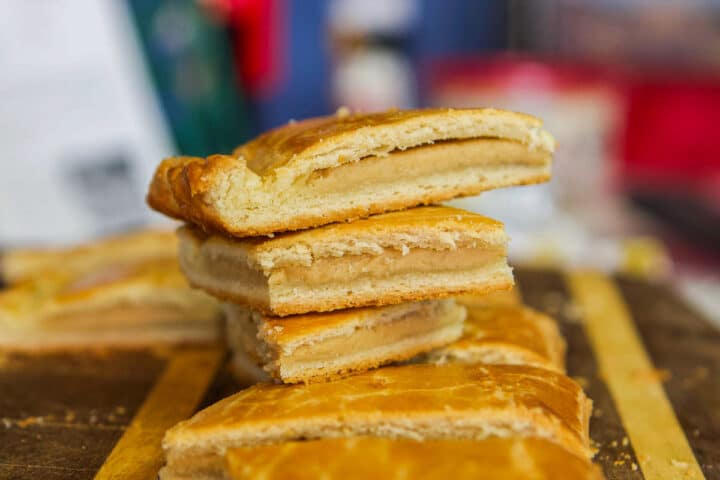
About This Recipe
Although I can't be certain, I imagine this recipe was invented out of necessity. When other filling ingredients were not available, butter and flour were. However the idea for this recipe came about, I'm just thankful that someone came up with a Kadeh Recipe.
When I think back to the '70s, I remember the huge family gatherings, where food, chai, and alcohol flowed. Although I didn't appreciate those days back then, I sure miss them now.
Kadeh brings back fond memories of the older generation (mostly gone now) enjoying an afternoon treat with their chai.
Back then I didn't like this Assyrian pastry. I preferred kileche, because they were sweeter and filled with dates, coconut, or walnuts.
Perhaps I had to mature into liking Chadeh. Wait, does the fact that I like them now mean I'm finally mature? 😉
How to Make Kadeh/Chadeh
Step 1 | Proof Yeast
Add yeast and 1 tsp. sugar to warm water. Mix and set aside for ten minutes.
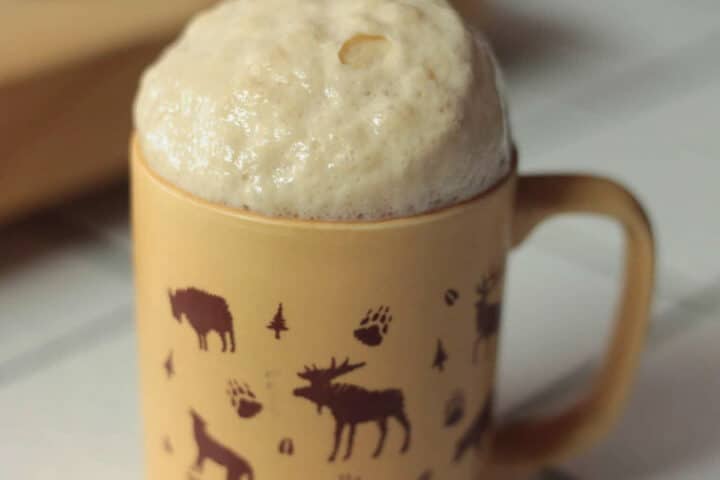
Step 2 | Knead Dough
Add the remaining dough ingredients to a large bowl, followed by the yeast mixture. Knead until the dough comes together. You can use a mixer if you prefer. Mark a cross in the center of the dough, cover, and place in a warm spot for one hour.
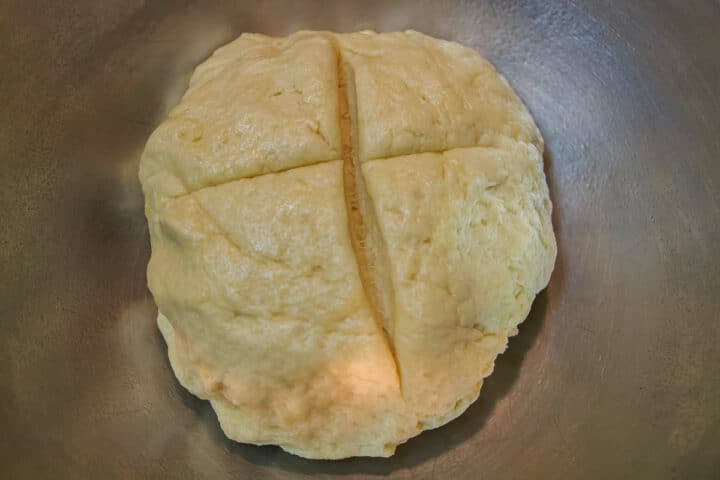
I once asked my mother why she and other Assyrians marked chada and kileche dough with a "cross." Mom explained that it was a way for the Assyrians to display their Christian faith when they were being persecuted and forced to convert to Islam during the Assyrian Genocide which took place in 1915 during WWI. The cross demonstrated that no matter what, their faith could not be taken from them.
Step 3 | Prepare the Roux
Melt butter in a large saucepan. Add oil, flour, salt, and sugar (if using). Stir over medium heat for approximately 30 minutes, or until the roux is light brown in color. It should resemble peanut butter. Set aside to cool.
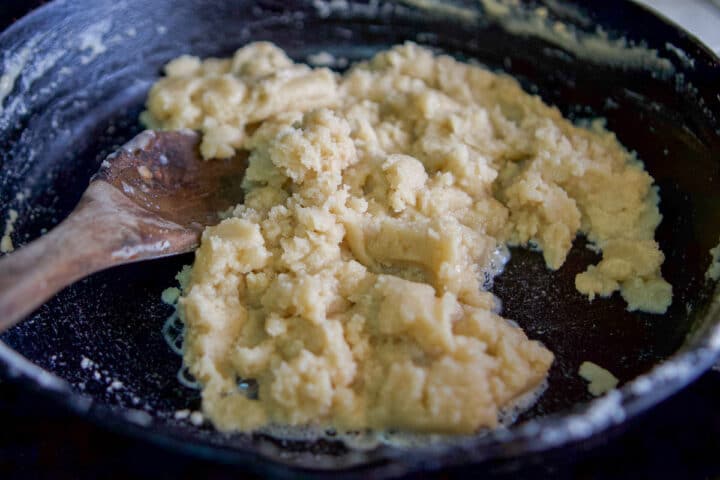
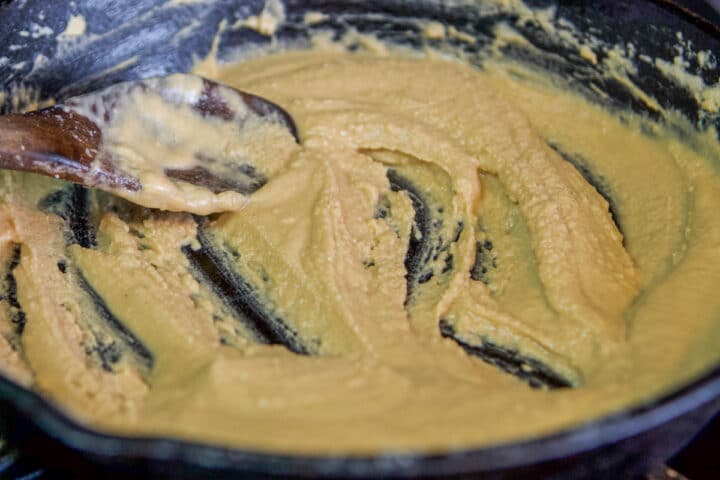
Step 4 | Assemble the Chada
Preheat oven to 375 degrees F.
Would you like to save this recipe?
Flour your work surface and divide the dough in half. Roll out one portion into a large circle. Cover half of the circle with half of the roux. Leave a ½" border around the edges.

Fold the dough in half, and braid the edges together, or use a fork to crimp the edges.
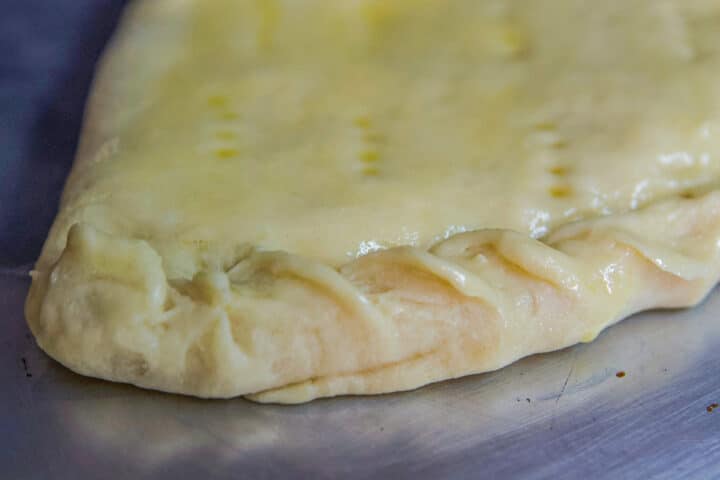
Step 5 | Baking Instructions
Carefully transfer the Chada onto a cookie sheet and prick the top with a fork. Brush the Chada with the glaze and sprinkle with sesame seeds, if using. Bake for 30 minutes, or until nicely browned, while you work on the second one.
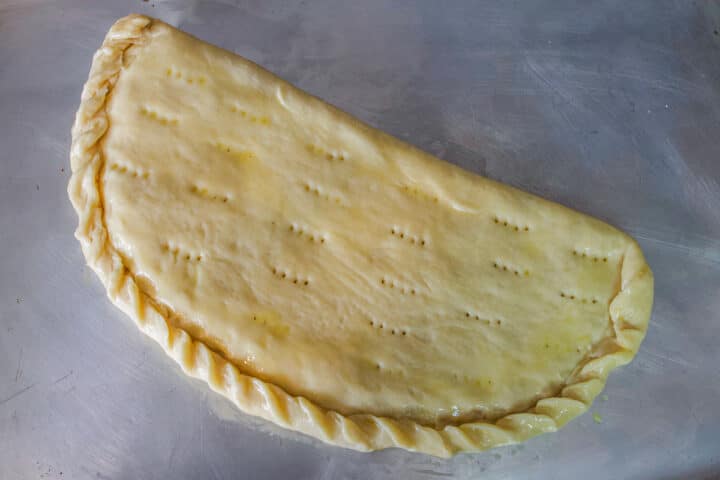
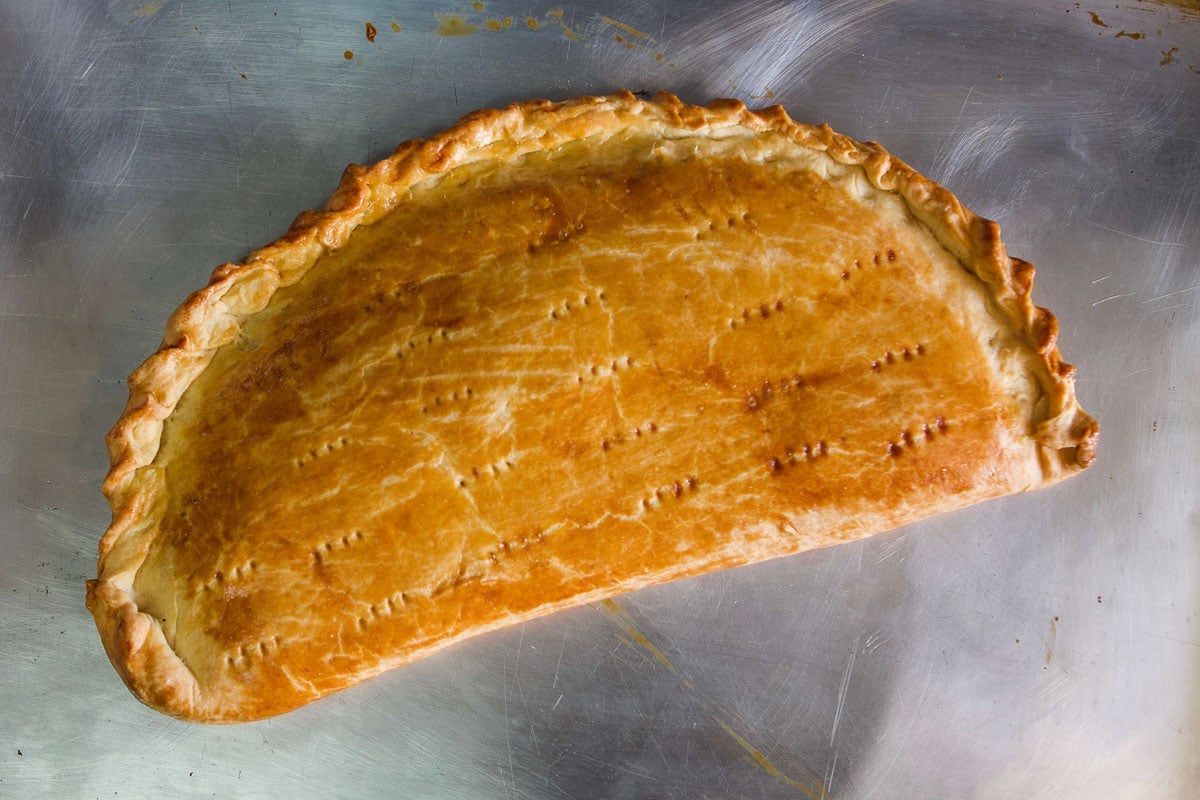
Kadeh Recipe Variations
Before I go any further, I want to explain the variations in spelling. This is due to the various dialects that Assyrian tribes have. For example, my family pronounced the name of this recipe with a "ch" sound, which is why I call them "chada" or "chadeh" (plural).
Many Assyrians, on the other hand, pronounce the word with the "k" sound instead, "kadah" or "Kadeh" (plural).
Chadeh can be either savory (how my family prepared them), or they can be sweetened by adding sugar to the roux.
There are shape variations as well. Chadeh can be shaped into a circle or half-circle (as in this recipe). They are cut into serving-sized portions after cooling off. Although not traditional, some also make individual-sized Chadeh.
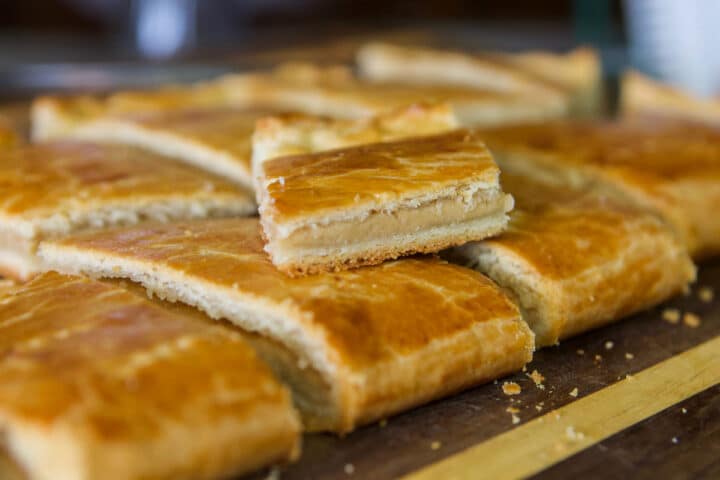
Pro Tips
- Nigella seeds are sometimes mixed into the pastry dough and provide a unique, peppery flavor. If you'd like to add them you'll only need 1 teaspoon per batch.
- Slice kadeh in portions and serve with tea.
- Kadeh can be frozen for up to 3 months.
Related Recipes
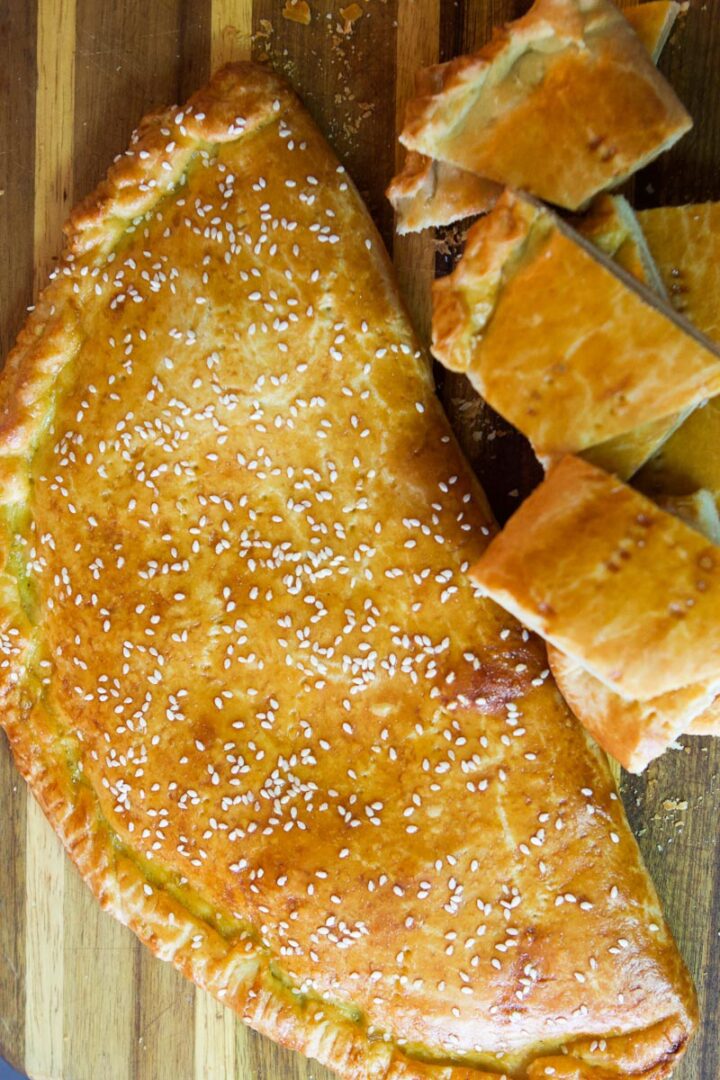
Don't forget to check out my Classic Middle Eastern Food Combinations.
📖 Recipe
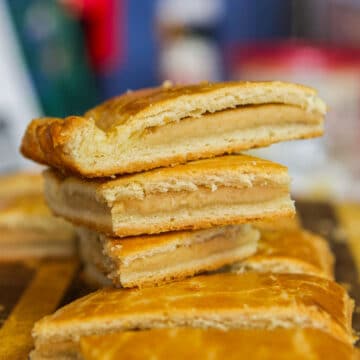
Kadeh Recipe (Assyrian Roux-Filled Pastry)
Ingredients
Dough
- 1¼ teaspoon yeast
- 1 teaspoon sugar
- ¼ cup warm water
- 3 cups flour
- 3 tablespoon sugar
- ½ teaspoon salt
- 4 tablespoon butter (melted)
- ¼ cup vegetable oil
- ⅓ cup yogurt
- 1 large egg
Roux Filling
- 10 tablespoon unsalted butter
- 2 tablespoon vegetable oil
- 1½ cup all-purpose flour
- ¼ teaspoon salt
- 2 tablespoon sugar (optional)
Glaze
- 1 medium egg
- 1 teaspoon sugar
Topping
- 2 teaspoon sesame seeds (optional)
Instructions
- Add yeast and 1 tsp. sugar to warm water. Mix and set aside for ten minutes.
- Add the remaining dough ingredients in a large bowl, followed by the yeast mixture. Knead until the dough comes together. You can use a mixer if you prefer.
- Mark a cross in the center of the dough, cover, and place in a warm spot for one hour.
Roux
- Melt butter in a large saucepan. Add oil, flour, salt, and sugar (if using). Stir over medium heat for approximately 30 minutes, or until the roux is light brown in color. It should resemble peanut butter. Set aside to cool.
Assembly/Baking Instructions
- Preheat oven to 375 degrees F.
- Flour your work surface and divide the dough in half. Roll out one portion into a large circle.
- Cover half of the circle with half of the roux. Leave ½" border around the edges. Fold the dough in half, and braid the edges together, or use a fork to crimp the edges.
- Carefully transfer the chada onto a cookie sheet. Prick the top with a fork, then brush with the glaze. Sprinkle with sesame seeds, if using.
- Bake for 30 minutes, or until nicely browned, while you work on the second one.
Notes
- Nigella seeds are sometimes mixed into the pastry dough and provide a unique, peppery flavor. If you'd like to add them you'll only need 1 teaspoon per batch.
- Slice kadeh in portions and serve with tea.
- Kadeh can be frozen for up to 3 months.


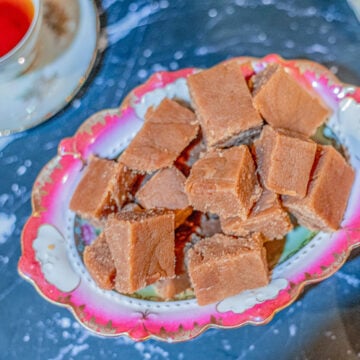
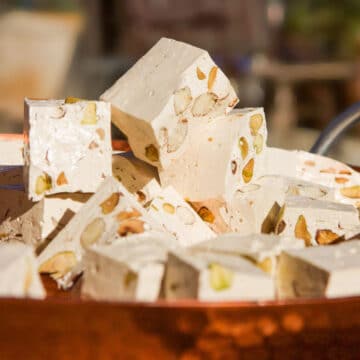
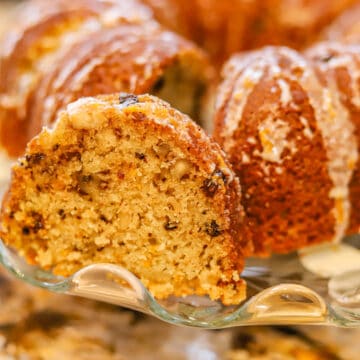
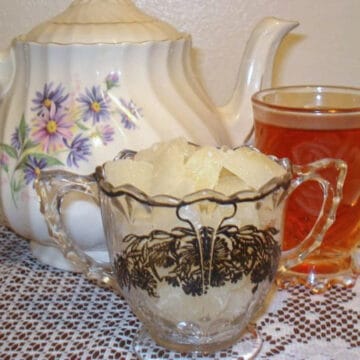
Roberta says
Hilda, this is the best recipe!!!! My mom and aunts use to make this and I haven't had it in many many years. your recipe was spot on!
Hilda Sterner says
Hi Roberta, Thank you so much for the feedback. I appreciate your comment, enjoy it!
Balwanta Brata says
Kadeh are supposed to be round. That looks like a Cornish pastiy.
Hilda Sterner says
Haha, love your name "Balwanta", for our non-Assyrian friends, that means a female who loves to eat. 😆 I know what you're saying. I thought the same thing when my aunt and mom switched from making them round to a half-circle, but eventually I got used to it. Especially since the shape does not affect the flavor, and you can easily make them round if you prefer!
Helen says
Thank you for sharing this recipe!
Hilda Sterner says
Thank you, Helen! Enjoy!
katherine Paul says
Can this be made with the roux? My grandma always made it plain for me and I still crave this bread when I am sick with some tea. She made the best bread and we should have watched her more:(
Hilda Sterner says
Hi Katherine, Do you mean to say can it be made without the roux? If so, I don't see why not! Your grandma sounds like she was a wonderful lady! We all wish we would have watched them more. I'm just glad I got to spend time with my mom in her last years and get all her recipes!
Navya says
Nice information.
Thank you so much for the updates.
Rachelle says
Hi Hilda,
I just want to say: thank you so much for your efforts in documenting all these recipes. It's your proactiveness that will help preserve our culture. I am finally looking to make cadeh for Easter. I remember watching my nana make it and figured it's time to attempt it for myself. A couple questions:
1) What type of yeast do you use? Instant or active dry?
2) What type of yogurt? A specific percentage of fat?
Hilda Sterner says
Hi Rachelle, Thank you for the kinds words. I figure we all have to do our part in preserving our culture and this is my contribution. I usually use whatever yeast I have on hand, usually dry active yeast and as for the yogurt, same thing. Usually I make my own, but have also used Greek yogurt, full fat usually! Good luck and let me know how they turn out!
William says
hello Hilda ,
sending our thank you for sharing your Kaddy recipes.
good job !
Hilda Sterner says
Thank you, William!